A New View of the Miraculous Honeybee
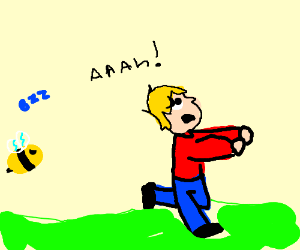 Maybe you are like me. I was scared to death of bumblebees when I was a little boy and still try to avoid them if I can.
Maybe you are like me. I was scared to death of bumblebees when I was a little boy and still try to avoid them if I can.
I didn’t really like honey bees either, but they weren’t as scary.
And when I was a kid, I was quick to smash a bee of any kind if it invaded my space. In short, I didn’t have much time for bees.
But after recently finding out more about them, I now believe honey bees are totally amazing. They have been around for over 300 million years, and you can still find out something new about them everyday.
So, to reopen your door to the world of the Miraculous Honey Bee, I want to present my top five “Amazing Things About Honey Bees!”
Amazing Thing 1: The Miraculously Evolved Worker Bee
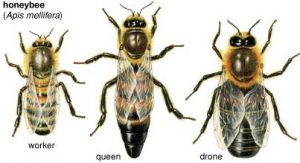 The worker honey bee has evolved into a pretty amazing creature. It is about ½ inch long — half the size of the queen bee — weighs 1/10 of a gram, and has a brain the size of a mustard seed. She lives only about 42 days, and does literally all the work in the hive. In addition, she spends the last 10 days of her life foraging for nectar, probably collecting no more than one tablespoon, and miraculously changing it into honey.
The worker honey bee has evolved into a pretty amazing creature. It is about ½ inch long — half the size of the queen bee — weighs 1/10 of a gram, and has a brain the size of a mustard seed. She lives only about 42 days, and does literally all the work in the hive. In addition, she spends the last 10 days of her life foraging for nectar, probably collecting no more than one tablespoon, and miraculously changing it into honey.
And let’s look at how amazingly well equipped she is to do what she does. The number(s) in each comment refers to a part of the diagram below.
- To feed larvae so they will grow into a Queen Bee, she has a Royal Jelly Gland (1).
- To smell, hear, taste, feel, navigate to get nectar, and care for her hive, she has two wonderfully versatile antennae (2).
- To see flowers, navigate via the sun, and use ultraviolet light, she has 5 special eyes, two of them with 6000 little photosensitive lenses, and hairs on them to help her navigate in windy conditions (3).
- To suck nectar from flowers, taste, and transfer food, she has a very versatile tongue (Proboscis)(4).
- To fly quite a ways to get nectar and fly back with a heavy load, she has four special wings (5).
- To carry nectar she’s collected back to the hive, she has a special honey stomach that holds half her weight in nectar (6).
- To carry pollen she’s collected back to the hive, she has pollen baskets on the back of her hind legs (7).
- To supply wax to make honeycombs, she has 8 wax glands (8).
- To protect the hive from intruders, she has a stinger and venom sac (9).
- To collect pollen from flowers, she has three million hairs on her body (10).
- To help her make honey from nectar, she has some enzyme glands (11).
- To help her emit odors (pheromones) to communicate, she has 15 additional pheromone glands (12).
(Note: Click on diagram to enlarge. Click on left arrow in the top menu to return)
How did this perfectly equipped honey bee happen? A mystery for the ages!
Amazing Thing 2- The Love Life of Bees
Back in the day, popular songs, like this one by Dean Martin and Jerry Lewis, made out that the love life of bees was pretty special, and humans could learn some lessons from them.
I hate to disappoint any of you who believe this, but I’m about to throw a pretty soggy wet blanket on that idea.
In the “love life” of honey bees, the Queen is the only female that mates! This specially anointed female, mother of all the other females, flies out on a single little 20 minute trip, mates with around 10 males—while flying in the air no less– and spends the rest of her life using their sperm to fertilize 2000 eggs a day.
She never mates again. And every male, after mating the first time, is viciously rendered not capable of mating again, and dies.
It’s a pretty bleak love life, but it serves bees well. It keeps the number of drones manageable, and produces enough worker bees to make all the needed honey and do everything else.
But take my word and don’t look to the bees for quality love life advice!
Amazing Thing 3 – The Way They Build Honeycombs
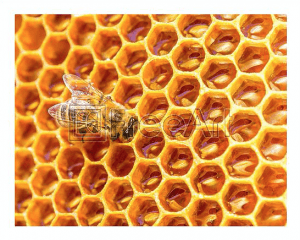 When they are between 10 and 20 days old, the worker honey bees prepare to make honeycombs by first becoming wax-making machines.
When they are between 10 and 20 days old, the worker honey bees prepare to make honeycombs by first becoming wax-making machines.
They just start eating honey, which is digested and converted to wax by eight wax glands in their abdomen.
The wax then oozes through the bee’s pores, and appears as flakes on their outer abdomen.
The bees then chew the wax flakes off of each other, continue chewing until the wax is moldable like clay, and then use it to build the honeycomb.
Somehow, centuries ago, bees discovered that a hexagonal honey comb can have the same capacity as a triangular or square honey comb, and it takes less wax to build it.
We will probably never know why or how, but the bees begin building the hexagonal honeycomb by making stacked cylinders, and allowing the spaces created when they didn’t quite fit together to be filled with wax. See “At the Start” photo (a) below.
Using the heat from their bodies, and their bodies as tools and measuring instruments, they melt and expand the wax between the cylinders to form the sides of the larger hexagon shaped honeycombs in the “After two days” (photo b).
So the fact that these short-lived little worker honeybees do build a perfect hexagonal honeycomb with wax they make themselves is, without a doubt, an “amazing thing.” I still don’t see how they do it.
Amazing Thing 4 – How They Communicate
In 1973, Karl Von Frisch received a Nobel Prize for his discovery that bees use a waggle dance to communicate with each other. Check out this video to find out about the Waggle Dance.
https://youtu.be/LU_KD1enR3Q
So, let’s review. A honey bee discovers a new food source more than 150 meters(1 ½ football fields) away, returns to the hive, and does a Waggle Dance to tell other honey bees exactly how to find it.
The duration of the dance tells how far away the source is, and the angle the bee dances to the suns vertical shows the direction to the flowers.
The honey bee dance is an amazing example of honey bee communication, but their communication using their sense of smell is even more extensive.
As mentioned earlier, honey bees use pheromones (chemical substances secreted by the bees exocrine glands and smelled by other bees) in all aspects of their life. It is the most important way in which bees communicate.
For example, the queen bee emits a pheromone (odor) that tells the hive all is well with her, and discourages workers from laying unfertilized eggs. A drone emits an odor to tell fellow drones its time to congregate at the mating sight. And the worker bees emit an odor that signals that they have stung an intruder.
Worker bees have 15 known pheromonal glands in all. What an amazing way to “talk!”
Amazing Thing 5– The Scientific Value of Their Sense of Smell
In photo b below, the bee’s antennae look like a couple of little twigs sticking out of its head. If we stop there, we miss an awful lot.
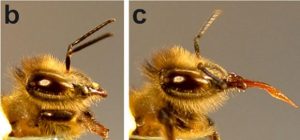
The honey bee’s antennae have 170 odor receptors, providing the bee with a “nose” that is 100 times more sensitive than humans, and 50 times more than a dog.
This makes their ability to smell so sensitive that they can detect a trace of scent in flight. And bees are able to recognize odors that are as faint as only two parts per trillion in an air sample (the equivalent of finding a grain of sand in a swimming pool).
So we shouldn’t be surprised that scientists have harnessed the honey bee’s phenomenal sense of smell to detect and track down explosives hidden by terrorists.
But how do they do it? Prepare to be amazed!
In photo c above, you see the bee’s proboscis, which the bee uses to suck nectar from a flower, and which also plays a key role in the bee’s detection of explosives. It works like this:
If you hold up sugar water (to bees), they automatically stick out their proboscis. This is called the bee’s Proboscis Extension Reflex (PER) I call it the bee’s “per-ing”
By mixing a bomb chemical with sugar water and then presenting the mixture to the bee, the researchers can train the bees (in no more than two hours) to also stick out their proboscis when they smell only the chemical.
Scientists say the honey bees have proved to be more sensitive in explosive detection than sophisticated man-made devices, detecting odors their devices cannot (such as detecting TNT in motor oil).
As another example of a use of a bee’s acute sense of smell, Medical researchers found that bees can be trained in 10 minutes to detect the odor of early stage cancer. Bees are placed in a glass chamber, and a patient blows into the chamber, as shown in this photo.
If the bees detect the cancer smell, they start per-ing. This works with several other diseases too.
No wonder researchers recognize the honey bee as one of the world’s most useful and amazing creatures.
Concluding Statements About Honey Bees
 I sure wish I had space to give you my “Top 20 Amazing Things About Honey Bees.” If I could, I would tell you, along with several other things, how a third of our food is dependent on the amazing process of bee pollination.
I sure wish I had space to give you my “Top 20 Amazing Things About Honey Bees.” If I could, I would tell you, along with several other things, how a third of our food is dependent on the amazing process of bee pollination.
I would wax eloquently and tell you about research that has shown that honey bees understand numbers, can count to four, and have a usable concept of zero.
I would also tell how the techniques honey bees use to forage for nectar have served as a model for utilizing computer internet servers that has saved the computer industry millions of dollars.
The fact that pesticides, mites and viruses, and loss of habitat have caused honey bees in the United States to die off at an unexpected rate, have caused scientists to revisit the quote by Albert Einstein below.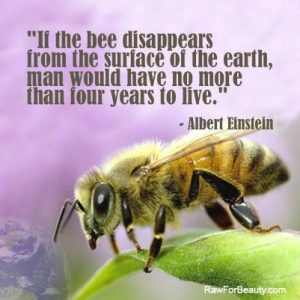
Even though Einstein’s quote may be a bit exaggerated, it brings up an important idea.
Honey bees help us, so lets look for ways to help them!


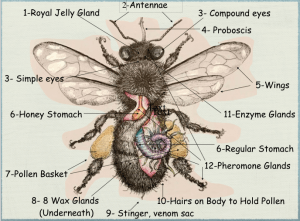
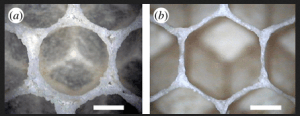
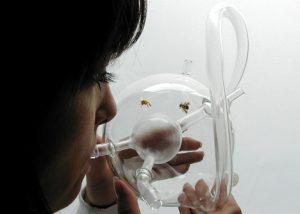
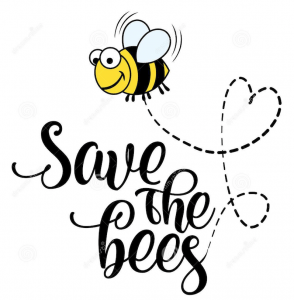
Bill Hammitt
Phares,
I love these. You write on such interesting subjects and can even make reading about bees interesting. I already look forward to the next one.
Phares O'Daffer
Thank, Bill. I value your comments on these blog posts. It crossed my mind that I should write one on Cubs managers, but I know less about that than I do about bees. 🙂
ellen
what wonderful creatures God has created!
Hope science finds out soon why our bees are not as plentiful these days?
Thanks, Phares for ALL your interesting blogs.
Ellen
Howard Daughenbaugh
Another example, Phares, of how all elements of creation are interconnected and interdependent. Thank you!
Your bee blog reminds me a story from my youth. One day at my grandparents home a friend and I road our bikes threw a hedge unaware of the beehive located therein. I was the second one threw. My friend escaped the vengeance of the bees. I ended up with the wrath of the bees deeply, plentifully, and painfully embedded in the torso of my body. Was soaked by my grandmother in wet baking soda. My grandfather’s wisdom was, “If you are going to ride through a beehive, make certain you’re the first guy through.” I suspect there is a life lesson in that.
Am awaiting the blog on Cubs managers, particularly the new one and why.
Phares O’Daffer
Howard, I love your grandmother’s wisdom!
I can remember times when I could have used it 🙂
Thanks for the story.
Phares O’Daffer
Howard, substitute “grandfather” for my “grandmother”
Sue Thornquist
Very Fascinating information, Dad. And I love your inclusion of the visuals and the videos. The “Birds and Bees” song paired with the scenes from Lewis and Martin movies definitely connected to my childhood. But, I am definitely aware that it is NOT an accurate reflection of the romantic lives of bees.
The “waggle” dance was one of my favorite details, and the very specific drawing of the bee and its “equipment” was especially helpful.
Great job with this one. Who would’ve thunk there was so much to know about BEES???!